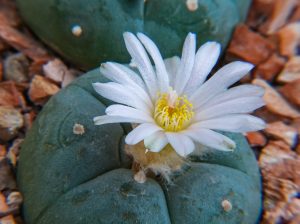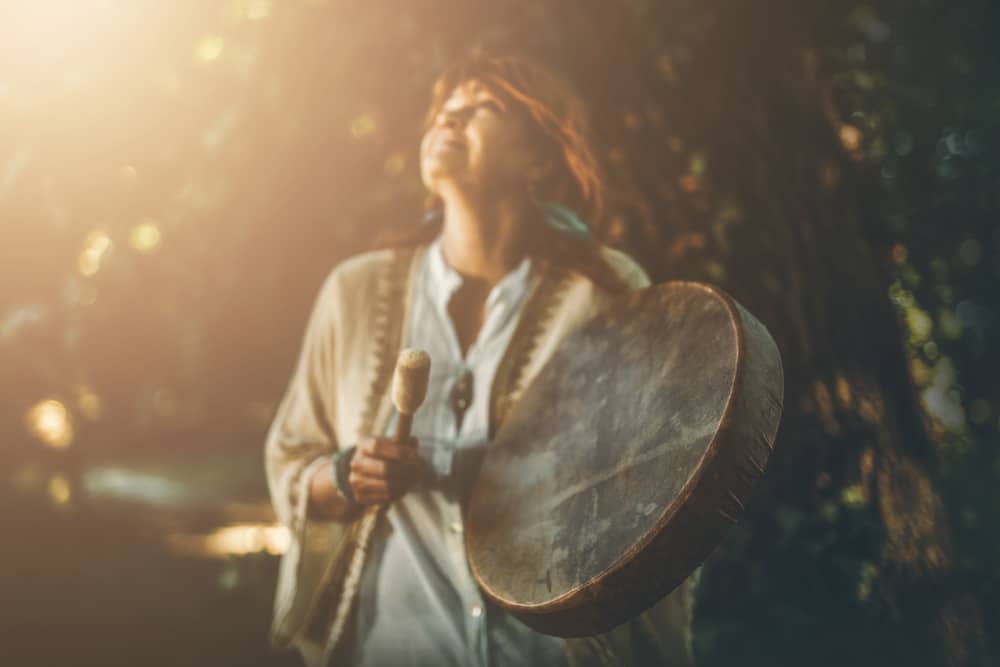What do a small country in Central Africa, the Andes, the Amazon and Mexico have in common? Different continents and ecosystems, different traditions and cultures. Yet united by a common dance of traditional entheogenic customs. Each region imbued with its own unique practice striving for one common goal – the awakening of consciousness.
Today I will take you to the magical world of entheogens, plant psychoactive substances that have accompanied humans on their journey through life for centuries. Plants that have left a lasting imprint on traditions and cultures around the world. From ancient shamanic ceremonies to modern religious rituals, entheogens are tools for expanding consciousness. They allow us to gain a deeper understanding of ourselves and the world, and to get in touch with a part of ourselves that we don’t hear on a daily basis.
Are you ready for an extraordinary journey? Buckle up and get ready to meet the powerful force of nature!
A neologism with ancient roots
Studying the materials for this article, I came across more than a dozen definitions of entheogen. Here I will quote the explanation that I think best describes the issue. In the book „Toxicology in Antiquity”, edited by Philip Wexler, you can read that: An entheogen is any substance that, when ingested, catalyzes or generates an altered state of consciousness that has spiritual significance.
Following this line of thought, the term entheogen can be used to describe almost any plant whose consumption alters the perception of reality, giving it a mystical dimension.
The word entheogen is a neologism coined in 1979 by a group of ethnobotanists and mythology researchers (Carl A. P. Ruck, Jeremy Bigwood, Danny Staples, Richard Evans Schultes, Jonathan Ott and R. Gordon Wasson).
The literal meaning of entheogen is “that which causes God to be in an individual.” From ancient Greek: ἔνθεος (entheos) and γενέσθαι (genesthe). Entheos literally means “god (theos) within,” genesthe means “to generate.”
Naturally occurring entheogens, such as psilocybin and dimethyltryptamine (Ayahausca), were most often used by ancient cultures as an indispensable part of spiritual and religious life. These were plants and substances not only respected, but even revered as sacred plants.
In contrast, artificial and modern drugs such as MDMA have never had a tradition of religious use.
Enteogens in the culture of the modern West
The modern perception of psychoactive substances is decidedly negative. While in ancient cultures the practices associated with these substances were deeply rooted, pretending to be an art, today’s view of them is quite different.
In the West, the use of entheogens often carries the stigma of drug abuse and distorts our view of the entire culture from which they originated. This perspective is fueled by notions of how psychoactive substances of all kinds are mind-altering, man-made chemicals and destroy entire communities.
And there is nothing surprising about this. Modern culture is saturated with constant rush, the need for instant gratification and a strong flattening of man’s multidimensionality. Religiosity has been reduced to empty formulas, depriving man of his deep spirituality. Cut off from his roots, man is searching for ways to return to his original values. This search, often through the abuse of consciousness-altering substances, can be disastrous in such a case.
Modern enclaves of entheogenic practices
Western culture seems to be moving toward separating psychoactive substances from the role they play in building a bridge between people and their spirituality.
Still, there are places in the world where such practices are very popular. These places attract many outsiders who seek a deeper understanding of themselves and the world around them. Their goal is not to experience intense sensations, but primarily to seek deeper meaning and connection with nature. They use the consumption of psychoactive plants as a tool to open up to new perspectives and deepen their spiritual path.
Gabon, Central Africa
A small country located on the west coast of Central Africa has been gaining immense popularity in recent times. This is due to Tabernanthe iboga, a plant that, when consumed in small amounts, has a stimulating effect, while when consumed in larger doses it exhibits strong psychoactive effects.
Iboga is a sacred plant that has been revered for centuries by the Babongo tribe, among others.
Its extremely potent effects have become the basis of a religion known as Bwiti. Loosely translated, Bwiti means “healing tree from another world” or “being that calls.” Followers of Bwiti consume iboga bark both for individual spiritual growth and to strengthen the community. Above all, however, it is a rite of passage, a kind of initiation and connection to ancestral knowledge.
The effects of iboga are intense and last up to 48 hours. It induces hallucinations with eyes closed and in the form of a waking dream.
The plant is taken in a ceremony led by a N’gang, or shaman, with clapping, singing and music. First, the bark of the root must be scraped and shredded, and then a ceremony is held with elders, healers and even children sitting on the sidelines. It is a communal event where the initiate opens up under the guidance of the plant and speaks aloud about his visions so that the N’ganga can interpret and guide the ritual.
Amazon and Andes, South America
While iboga ceremonies remain more the domain of African cultures, a particular South American beverage has made a name for itself not only in South and North America, but also in Europe. Ayahuasca, as it is referred to, is a brew traditionally used by indigenous Amazonian and Orinoco cultures for religious ceremonies, healing and shamanistic practices.
Users of the Ketchua languages, using modern orthography, spell the name as ayawaska. In Ketchua languages, aya means spirit, soul or dead body, and waska means rope or liana. The word ayahuasca is sometimes translated as “vine of the soul” or “rope of the dead,” depending on the interpretation.
Ayahuasca decoction is made from crushed Banisteriopsis caapi vines and cooked alone or with the leaves of other plants: Psychotria viridis (Chacruna), Diplopterys cabrerana (known as Chaliponga or Chacropanga), Mimosa tenuiflora, often with datura and pure jungle tobacco, called mapacho, added to stimulate purification. The ingredients can vary widely from shaman to shaman. The decoction is boiled for 12 hours and blessed with sacred tobacco smoke blown by the shaman over the cauldron and into its interior.
The task of the Ayahuasca ceremony is to purify the person drinking it. Cleansing both physically and mentally. The physical is accomplished through vomiting and very severe diarrhea. Mental purification is to be achieved through communication with the spirit world. The Ayahuasca ceremony is performed with the participation of shamans who guide participants through mystical experiences and spiritual revelations through song, music and ceremonial dance.
South Texas, Northeast Mexico
In the sun-scorched deserts on the border of Mexico and Texas grows a small, thornless cactus with downright magical powers. Peyote, or Lophophora williamsii, is a hallucinogenic cactus containing mescaline. It was used for more than 5,000 years by the Aztecs, Mexican Indians and Native Americans as a focal point for cultural and religious practices.
 The name peyote comes from the Nahuatl language (peyōtl), where it means – to shimmer, to shine. It grows very slowly, often taking up to 30 years before it blooms. Only after 5 years does the cactus begin to produce mescaline.
The name peyote comes from the Nahuatl language (peyōtl), where it means – to shimmer, to shine. It grows very slowly, often taking up to 30 years before it blooms. Only after 5 years does the cactus begin to produce mescaline.
Peyote rituals are traditionally communal in nature. The shaman leads the group in singing special songs while they eat dried pieces of cactus together. Within 10 to 12 hours, hallucinations (and fits of violent vomiting in the case of novices) transport the group out of time and space. These rituals are still performed today by the indigenous Huichol people.
Interestingly, peyote is commonly sold in pharmacies in Mexico. Tea made from the cactus is consumed, for example, to relieve colds or intestinal problems.
Pacific Islands
A piece of land in the South Pacific, where one of the milder entheogens is grown, is transformed into a magical world where drinking a certain beverage becomes a ritual and a way to relax. Kava (Piper methysticum) not only stimulates the senses, but also opens the gates to a mystical world, allowing one to discover new insights into reality.
The name kava or kava kava comes from the Tongan and Marquesan languages and means bitter.
Kava is used in the Pacific islands for medicinal, religious, political, cultural and social purposes. These cultures highly value the plant and attach great importance to it. In Fiji, for example, it is used in official ceremonies. Interest in kava is growing worldwide, and as a result, bars serving the plant in beverage form are also beginning to appear outside the traditional growing regions of the South Pacific.
In Hawaii, Vanuatu and Fiji, kava is an extremely important part of daily life. It is used in a variety of contexts and acts as a mediator or link between people and a spiritual force known as Vu. It is said that without kava, Vu will not appear.
Fresh or dried kava roots are mashed, chewed or powdered to make a cloudy, milky drink. However, prolonged consumption of the drink plunges kava drinkers into a mental stillness that is a kind of pleasant waking sleep. The intoxication induced by kava must be approached with the right mindset (such as meditating on a question) to be consciously guided by it.
Oaxaca, southern Mexico
The mountainous Sierra Madre Oriental region in the northern part of the state of Oaxaca is inhabited by Mexican Indians – the Mazatecs. Mazatec shamans are known for their ritual use of, among other things: psilocybin mushrooms.
Healing ceremonies called veladas using psilocybin mushrooms or Salvia Divinorum helped popularize the indigenous Mexican ritual use of entheogenic mushrooms among Westerners.
In its original form, the Mazatec ritual, common to other pre-Columbian peoples of Mesoamerica, served a medicinal purpose, treating physical and mental illnesses. Mushrooms are prized for their ability to transport users beyond the boundaries of reality. In practice, the sacred Mazatec ritual is social in nature. Mushrooms are smoked in the smoke of copal incense, and then two are eaten at a time, representing the duality and power of the united sexes. In the silence and darkness, the shaman, as the designated voice of the group, becomes the channel through which the mushrooms convey their message. And they happen to have a lot to say.
We wrote more about sacred mushrooms here
